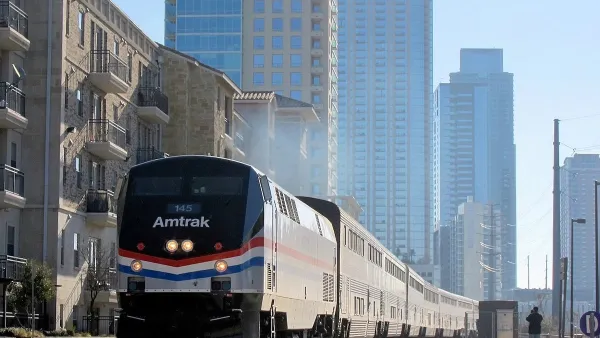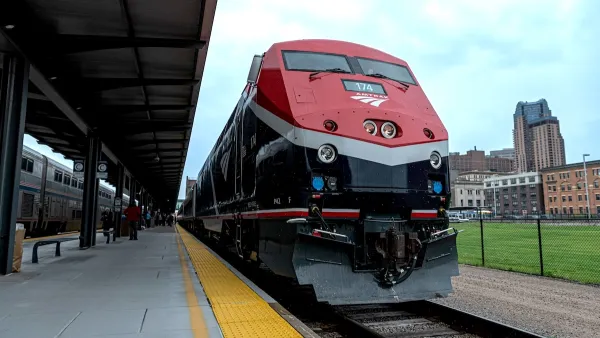The much-maligned rail system is being reconsidered, as gas prices and environmental awareness send people looking for solutions. But can Amtrak step up to the plate?
"The storybook plight of the Little Engine That Could, struggling to make it up a mountain, is a pretty apt metaphor for America's rail system. Limited access, outdated equipment and high ticket prices have been the sorry story of Amtrak, the nation's principal rail carrier, from its beginning pushing most would-be riders to other ways of getting around. But $4-a-gallon gas and chaotic airways are working in Amtrak's favor. In an era when green is hip and mileage matters, trains can't be beat. A diesel locomotive at its most efficient can move a ton of weight 436 miles on a single gallon of fuel, according to the Association of American Railroads, making a full train about 10 times thriftier than your new hybrid. "Hands down, traveling by rail is the most fuel-efficient and least-carbon-intensive way you can go," says Nancy Kete, director of the World Resource Institute Center for Sustainable Transport.
It's a common theme in ecoconsciousness: what used to be the antiquated way of doing things-like growing your own food or harnessing power from wind-is suddenly new again. Amtrak and a handful of commuter rail lines are trying to grab the moment by using environmental friendliness to appeal to new riders and the taxpayers who fund the systems. There are signs the strategy is working. Over the past two years, Amtrak's ridership has increased almost 17 percent systemwide. And the recent spike in gas prices has pushed train ridership to capacity on some routes. A hefty funding package for improvements is currently up for debate in Washington, and Amtrak is already exploring ways to enhance service along popular routes. But getting the system up to speed is a tall order."
FULL STORY: All Eyes on Amtrak

Planetizen Federal Action Tracker
A weekly monitor of how Trump’s orders and actions are impacting planners and planning in America.

Restaurant Patios Were a Pandemic Win — Why Were They so Hard to Keep?
Social distancing requirements and changes in travel patterns prompted cities to pilot new uses for street and sidewalk space. Then it got complicated.

Map: Where Senate Republicans Want to Sell Your Public Lands
For public land advocates, the Senate Republicans’ proposal to sell millions of acres of public land in the West is “the biggest fight of their careers.”

Orange County, Florida Adopts Largest US “Sprawl Repair” Code
The ‘Orange Code’ seeks to rectify decades of sprawl-inducing, car-oriented development.

Maui's Vacation Rental Debate Turns Ugly
Verbal attacks, misinformation campaigns and fistfights plague a high-stakes debate to convert thousands of vacation rentals into long-term housing.

San Francisco Suspends Traffic Calming Amidst Record Deaths
Citing “a challenging fiscal landscape,” the city will cease the program on the heels of 42 traffic deaths, including 24 pedestrians.
Urban Design for Planners 1: Software Tools
This six-course series explores essential urban design concepts using open source software and equips planners with the tools they need to participate fully in the urban design process.
Planning for Universal Design
Learn the tools for implementing Universal Design in planning regulations.
Heyer Gruel & Associates PA
JM Goldson LLC
Custer County Colorado
City of Camden Redevelopment Agency
City of Astoria
Transportation Research & Education Center (TREC) at Portland State University
Camden Redevelopment Agency
City of Claremont
Municipality of Princeton (NJ)




























